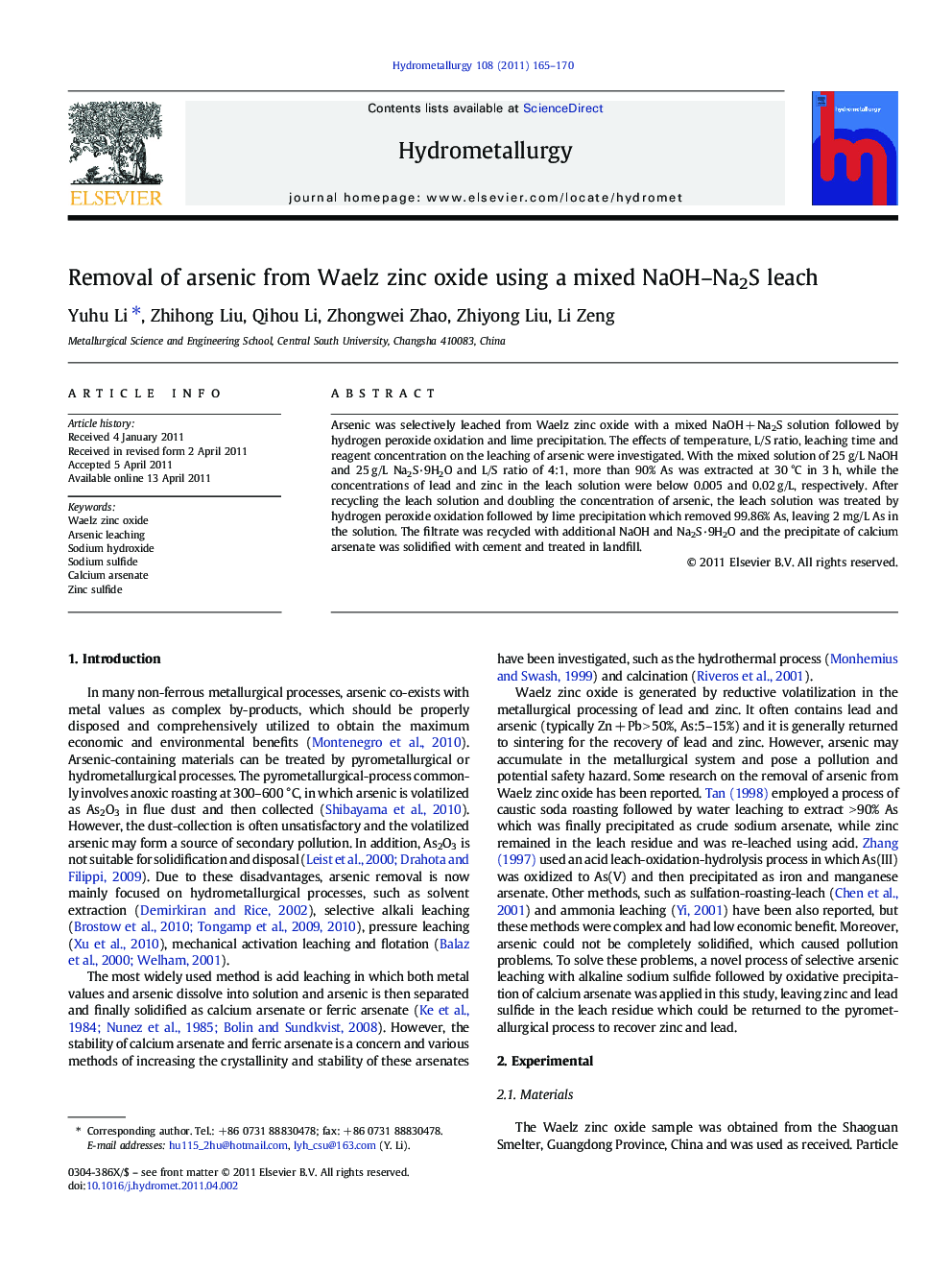| Article ID | Journal | Published Year | Pages | File Type |
|---|---|---|---|---|
| 212660 | Hydrometallurgy | 2011 | 6 Pages |
Arsenic was selectively leached from Waelz zinc oxide with a mixed NaOH + Na2S solution followed by hydrogen peroxide oxidation and lime precipitation. The effects of temperature, L/S ratio, leaching time and reagent concentration on the leaching of arsenic were investigated. With the mixed solution of 25 g/L NaOH and 25 g/L Na2S·9H2O and L/S ratio of 4:1, more than 90% As was extracted at 30 °C in 3 h, while the concentrations of lead and zinc in the leach solution were below 0.005 and 0.02 g/L, respectively. After recycling the leach solution and doubling the concentration of arsenic, the leach solution was treated by hydrogen peroxide oxidation followed by lime precipitation which removed 99.86% As, leaving 2 mg/L As in the solution. The filtrate was recycled with additional NaOH and Na2S·9H2O and the precipitate of calcium arsenate was solidified with cement and treated in landfill.
Research highlights► A process of alkaline leaching in sodium sulfide and sodium hydroxide mixture was employed to separate arsenic from Waelz zinc oxide. More than 90% of As was leached from Waelz zinc oxide, while the concentrations of Pb and Zn in leachate were below 0.005 g/L and 0.02 g/L respectively. ► A novel process including leaching, oxidation and precipitation was developed in treatment with Waelz zinc oxide. It was able not only to decrease the loss of metal values, but also to recover alkali and water. Arsenic concentration in leachate was increased from 5.5 g/L to 10.4 g/L after recycled mixed alkali leaching. 99.5% of As was precipitated and the concentration of As and NaOH in final solution was about 2.1 mg/L and 18 g/L respectively. This final solution should return to leaching process with extra addition of alkaline.
